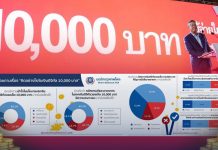A gay rights activist network is planning to draft a civil partnership bill supporting same-sex marriage and demanding rights comparable to those accorded to male-female married couples.
The government formed a committee late last year to draft legislation giving legal recognition for same-sex couples. Last year’s incident where a prominent gay activist was refused permission to be married spurred calls to form a committee to draft the current civil union bill. The Rights and Liberties Protection Department and the Parliament’s committee on Legal Affairs, Justice and Human Rights this month held the first public hearing of the civil partnership bill, which is expected to be presented to Parliament in March.
The Sexual Diversity Network (SDN) said that while the House Bill garnered solid support from LGBT (Lesbian, Gay, Bisexual and Transgender) groups and the general public, the network is drafting another version of the bill in case that the House-sponsored version is denied cabinet approval. The civil society bill would need to collect 10,000 names of eligible voters and MPs in order to introduce it to the House.
Though Thailand has one of the most tolerant attitudes toward homosexuality in Asia, there are no specific laws designed to protect same sex couples from discrimination. Thai law currently does not recognize same-sex marriages, civil unions or domestic partnerships. It is unclear if a same-sex couple or an individual LGBT Thai would be permitted to adopt or have custody of children. Despite the lack of formal legal recognition, Thai same-sex couples tend to be publicly tolerated, particularly in major cities such as Phuket and Pattaya.
Gradual reforms have been introduced in recent years as the Thai armed forces lifted its ban on LGBT people serving in the military in 2005. Prior to this reform, the LGBT population were exempted from conscription under a legal pretext identified as suffering from a “mental disorder” as indicated in the 1954 law.




